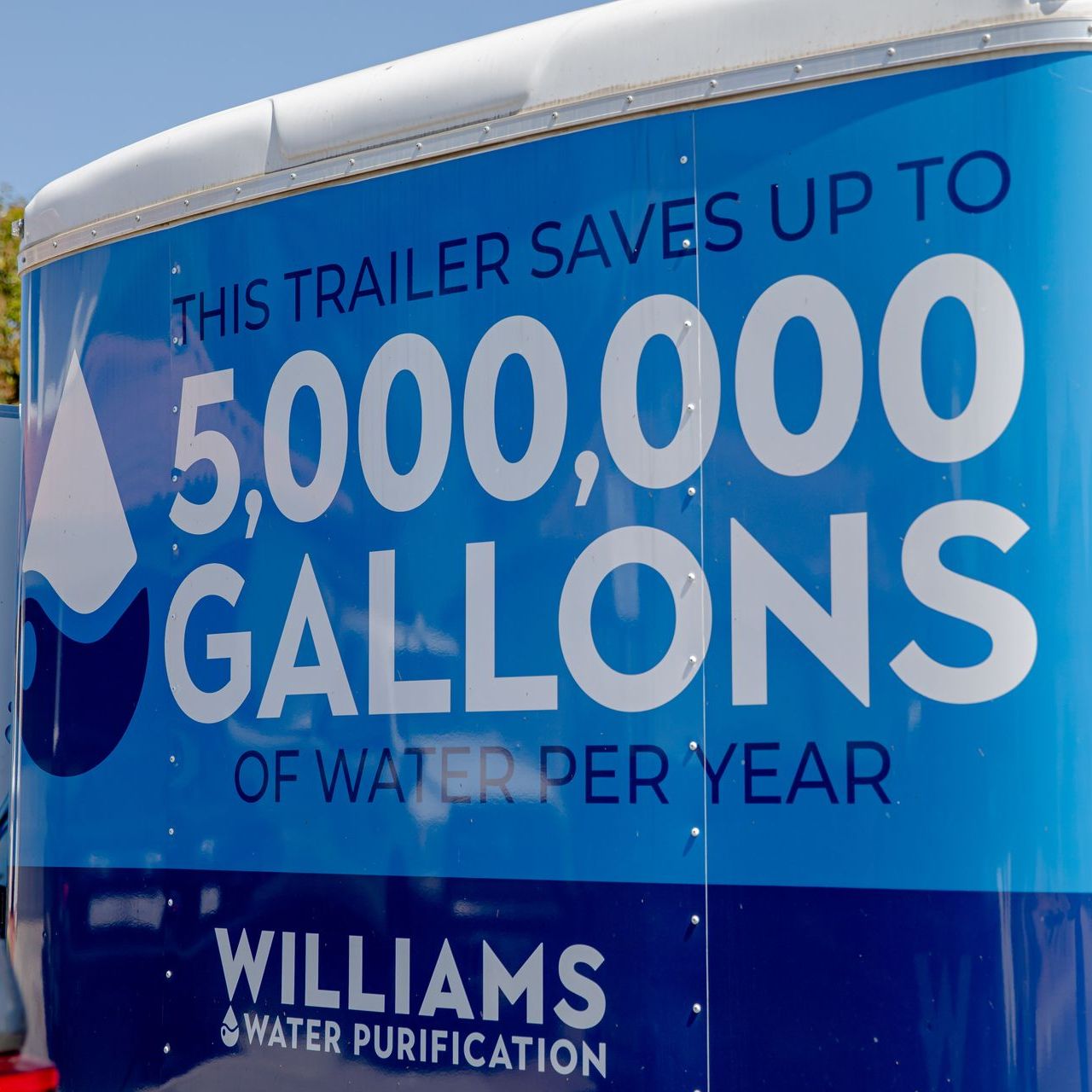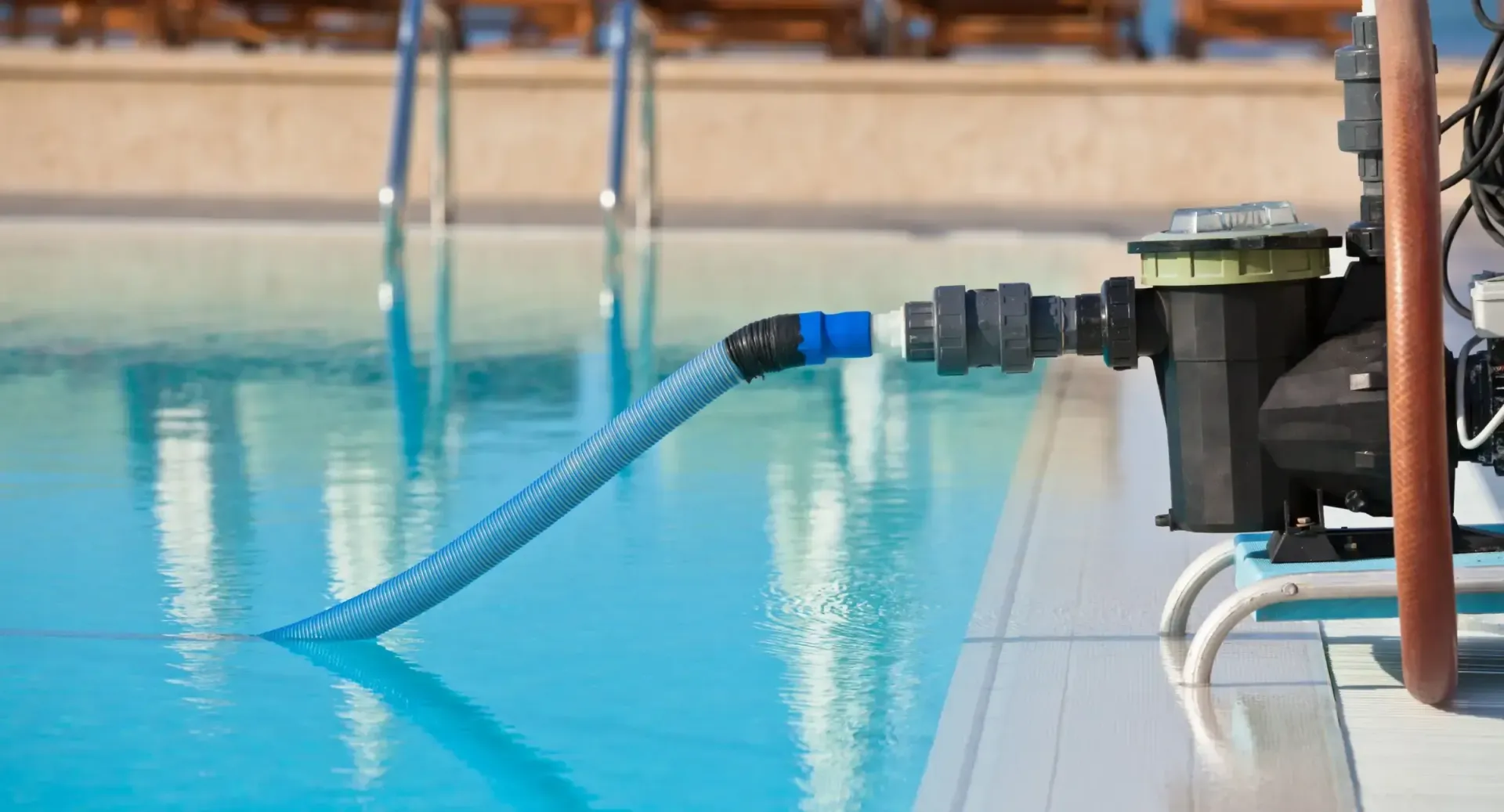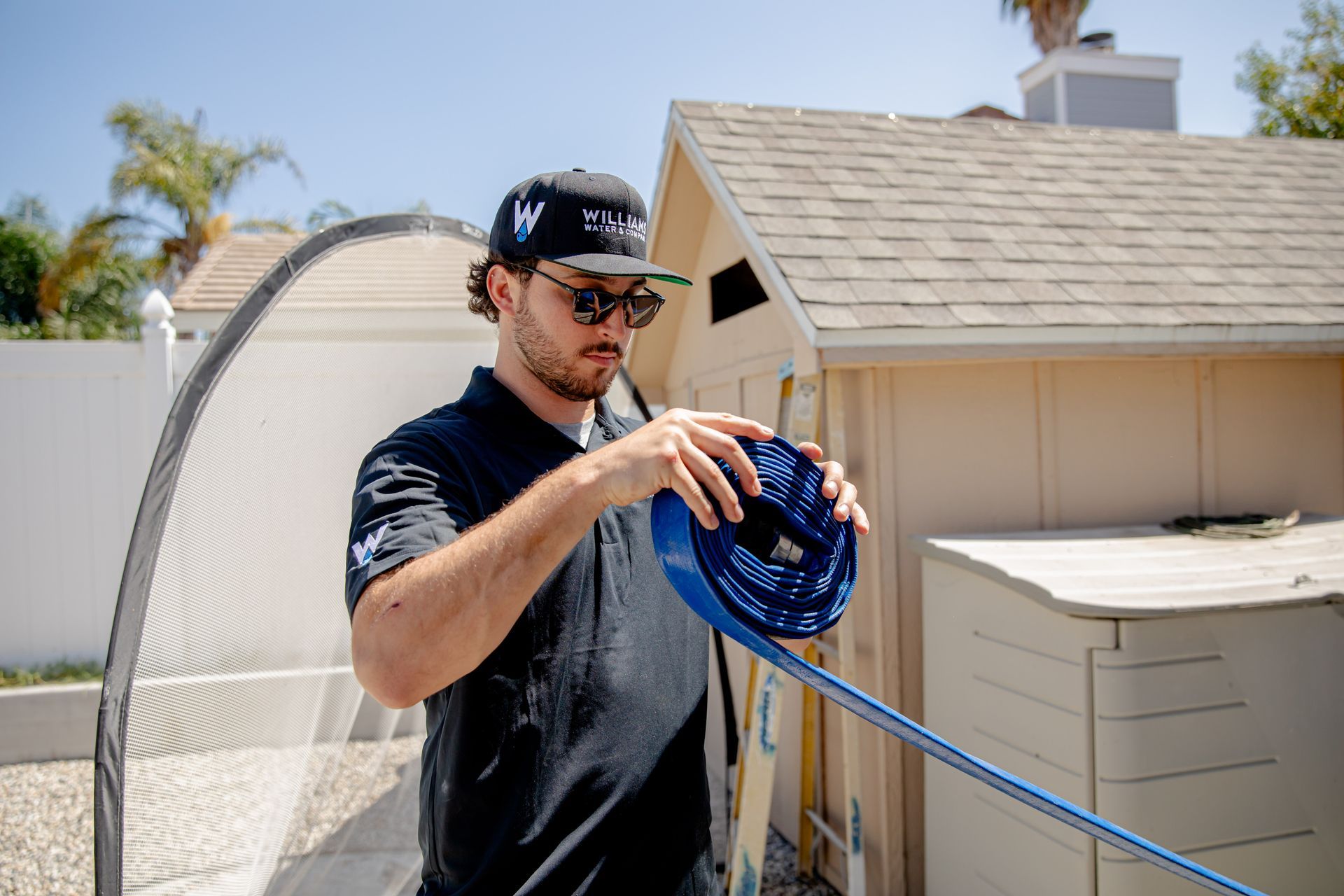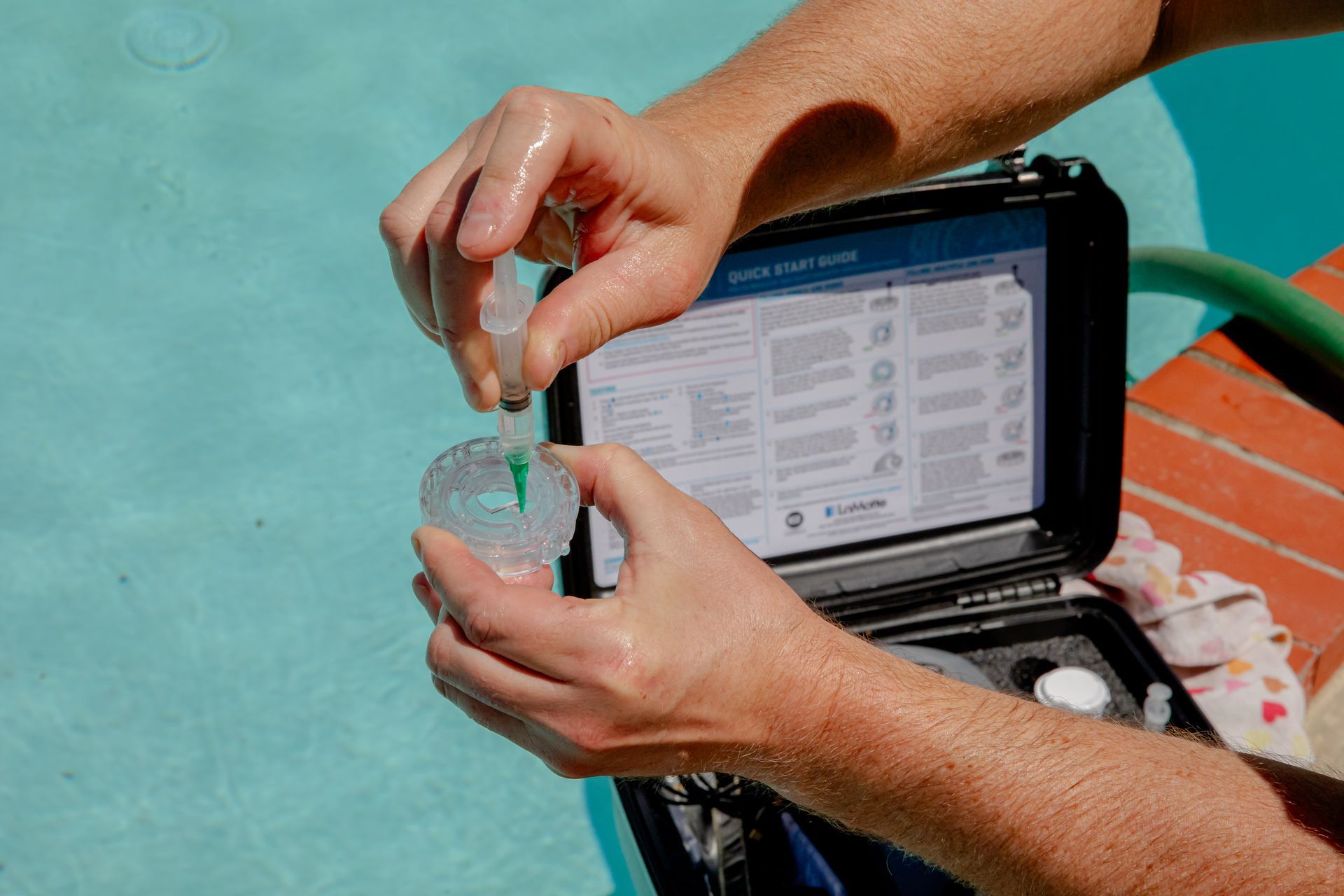Pool Reverse Osmosis Treatment
Millions of gallons of perfectly usable pool water are wasted every year. We’re on a mission to change that. Our Puripool™ Reverse Osmosis system revolutionizes pool maintenance, preserving 85% of water and eliminating pollutants, leaving you with crystal-clear water in just one day.

Cleaner, Faster, More Sustainable
We’re not making waves in our industry for nothing. We've reinvented traditional pool cleaning services that are time-consuming and wasteful. Using cutting-edge technology, we reduce calcium hardness, eliminate toxins, and revitalize your pool in just one day.
Let’s Get to Work
Questions about our process or ready to schedule service? Send us a message or give us a call!
What is Reverse Osmosis?
Believe it or not, you may not be able to visually detect the need for reverse osmosis treatment in your pool water because the contaminants cannot be seen with the naked eye. However, several indirect indicators can help you identify when your pool needs reverse osmosis treatment:
- Calcium Deposits: You may notice the presence of calcium deposits on the plaster or tile line in your pool.
- Chemical Consumption: If you’re burning through a significant amount of pool chemicals to maintain water quality, it could be a sign of contamination.
- Equipment Damage: Poor water quality can damage your pool’s light fixtures and equipment.
In such cases, our competitors may tell you to drain your pool and start fresh. That’s the wrong approach. Our treatment offers a cost-effective, low-labor alternative that revitalizes your water.
Here’s a quick overview of how the process works. First, we pressurize pool water so it flows through a reverse osmosis membrane, which traps unwanted particles, including:
- Total dissolved solids (TDS)
- Dirt and dust
- Lowers calcium hardness and minerals
- Viruses
- Heavy metals
- Phosphates
- Cyanuric acid (CYA)
Once the water passes through the membrane, we rechannel the treated water back into your pool, leaving it clear, clean, and contaminant-free. The best part? From start to finish, the process only takes a single day.
More Water Treatment Services
Benefits of Reverse Osmosis Treatment
Reduces Costs
Save money on chemical expenses, conserve water, reduce unnecessary repair costs, and extend the life of your pool equipment—all while enjoying cleaner, safer water.
Increases Water Clarity
Our process improves water clarity and color, giving you better views, and an overall safer, cleaner, more sustainable swimming experience.
Less Maintenance
Spend more time swimming—not vacuuming. Reverse osmosis reduces time-consuming maintenance routines without introducing additional chemicals.
Softer Water
Reverse osmosis also reduces hardness found in most tap water, eliminating the unsightly scaling you’ll find on your tile and filtration equipment.
Less Contaminants
Over time, pools accumulate dirt, debris, bacteria, heavy metals, and other toxins. Our process filters out these contaminants—even those you can’t see with the naked eye.
One-Day Process. Long-Term Savings
How We Work
We arrive with a mobile filtration trailer designed to clean your pool water on-site. Like everything we do, our trailer is self-sufficient and runs on its own power.
To begin the process, we connect two hoses to the trailer—one for extracting water from your pool and another for returning purified water. The pre-treatment process occurs before the water reaches the reverse osmosis membranes, ensuring only pure, clean water is returned to your pool.
Our system can handle up to 40,000 gallons in a single day, which means we complete most jobs in 12-16 hours. Commercial pools may take longer, depending on their size. Once we’re done, you’ll be left with a pool that’s clean, safe, and free from contaminants.



Frequently Asked Questions
How does the Puripool™ Process work?
Our mobile filtration trailer utilizes reverse osmosis (RO) to reduce:
Calcium hardness
Total dissolved solids (TDS)
Salts
Phosphates
Cyanuric Acid (CYA)
Waterborne diseases
And other contaminants from the swimming pool
Our trailer is completely self-contained and runs on its own power. Two hoses extend from the trailer—one connected to a pump that draws water from your swimming pool into the mobile filtration trailer. We use a second hose to return the treated water to your pool.
The water undergoes pre-treatment before contacting the reverse osmosis membranes, ensuring pure, clean water returns to the swimming pool. We estimate how long the process will take by measuring the total dissolved solids (TDS). This tells us how long it will take to reduce contaminants and calcium levels to lower levels than your city offers.
It’s worth mentioning that there is no downtime during the process and the interior finish of the swimming pool is never exposed.
How long does the process take?
Currently, we can transform 40,000 gallons of water a day into safe, clean drinking water! Obviously, the size of your pool determines how long it will take based on this level. However, most residential swimming pools will take between 12 and 16 hours to complete, and commercial pools take longer.
Is the process safe?
Absolutely! In fact, you can actually swim in the pool during the filtration process! There are no power cords or electricity in or near your pool, nor are they lying around for someone to trip on.
An inch-and-a-half hose with a Virginia Graeme Baker Act (VGBA) compliant fitting is placed in one end of the pool to draw the water back to the trailer for treatment, and another inch-and-a-half hose returns the clean (drinkable!) water back to your pool. That’s it!
We are 100% self-contained and do not need to inconvenience you with electricity, extension cords, or an outlet.
All we need from you is a freshwater supply to replenish the small amount of water lost during the process—approximately 15-20%.
My pool water is cloudy or has a green/yellow color. Will the Puripool™ Process help?
Even though the Puripool™ Process can transform contaminated pool water to drinking water standards, we are not a pool filtering/maintenance company.
Your pool equipment or pool service company must clear any suspended solids and algae from your pool before we begin work. Our service is strictly limited to the chemical purification of your pool and the removal of total dissolved solids (TDS), viruses, bacteria, allergens, and waterborne diseases that your pool equipment cannot remove.
In short, your pool water must be clear, non-turbid, and algae-free before we begin the Puripool™ Process.
How can I tell if I have hard water in my pool?
If you spot scaling, chances are you have hard water—even if it isn’t visible to the naked eye.
Your best chance of identifying hard water is if you turn on the lights for your swimming pool at night. Typically, you can see these scaled particles floating around your pool at night! If you haven’t changed the water in your swimming pool in two or more years, it’s there! Trust us.






